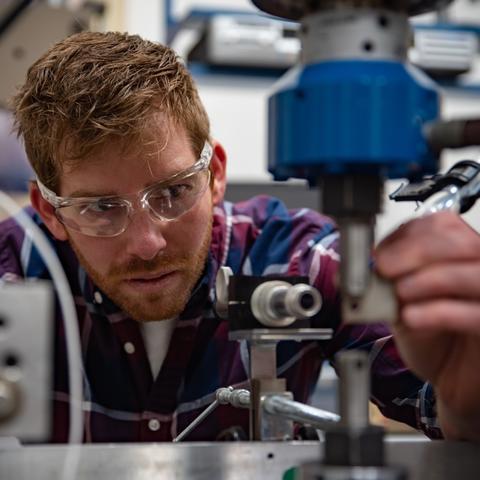
Jake testing the fortitude of a 3D-printed titanium part.
We have researchers who break stuff so that others can live their lives without stuff breaking down prematurely. Meet one of them, materials research engineer Jake Benzing.
You may have seen Jake’s previous handiwork producing electron backscatter diffraction images of the tiny metallic grains that make up 3D-printed metals. His current efforts might not be as pretty, but they are definitely useful.
Shown here, for example, Jake tests the fortitude of a 3D-printed titanium part. This particular metal alloy (Ti64) is commonly used in the aerospace and military industries for its ability to withstand extreme heat. But traditional manufacturing methods can lead to long wait times for complex parts.
3D printing stands to change that. But first, we need to know how the 3D-printed part’s durability compares to its traditionally manufactured counterpart. Jake is one of the researchers searching for 3D-printed Ti64’s breaking point and measuring its performance up until that moment.
As an early-career researcher, Jake is also gaining experience in cryogenic mechanical testing by joining colleagues in studying the metals used for gas pipelines and power plant storage containers. Measuring the toughness of steel welds when submerged in ultracold liquids is what that work is all about.
Follow us on social media for more like this from all across NIST!

